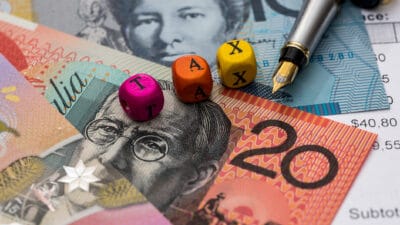The financial markets are going through some turbulence at the moment. Yes, the S&P/ASX 200 Index (ASX: XJO) is enjoying a day in the green today, up 1% to 7,000 points. But over the past month, the ASX 200 has been rather volatile. Just in the past 10 days alone, the ASX has gone from making a new record high of 7,172 points, to falling as low as 6,919 points yesterday.
Volatility abounds
The large US indexes are also showing some volatility. Although the Dow Jones Industrial Average (INDEXDJX: .DJI) is only ~2.5% off of the all-time high it hit earlier in the month, we have seen some significant gyrations in recent days. The tech-heavy Nasdaq Composite (INDEXNASDAQ: .IXIC) Index has been far more tempestuous. After hitting its own record high back on 26 April, the Nasdaq has given up around 6% of its value since then. In just the past week, this index has gained 3% and lost 3%.
That's just shares though. Other financial markets have been far more volatile. The bond market has been fluctuating wildly in recent months. According to CNBC, the yield on 10-year US Treasuries was around 1.56% on 6 May. By 12 May, it had risen to almost 1.7%, and is going for 1.66% at the time of writing. That might not sound like a big deal, but it does indicate a decisive shift in what markets are pricing in.
And we haven't even got to cryptocurrencies yet. Bitcoin (CRYPTO: BTC) prices are currently at a 3-month low after cratering more than 22% in the past week alone. Since topping out at just over US$60,000 a coin in mid-April, Bitcoin is now priced at US$38,000.
All of this is connected to two things: interest rates and inflation. Well, more just interest rates, but the two usually come hand in hand and inflation normally comes first.
Interest rates and inflation
Until about a month ago, the markets were very content with both the US Federal Reserve and the Reserve Bank of Australia (RBA)'s complacency on inflation. Both central banks committed to only raising rates when inflation was comfortably above 2%, and both full employment and positive wage growth achieved.
Rates would not be going up for years, both banks said. And quantitative easing (QE) programs would also stay in place. 2024 was the year most floated as the earliest a rate hike might happen. In other words, both banks were telling us that markets could keep rising until then.
Today, those sunny skies are growing clouded. Said cloud is the inflation figures the US economy recorded for the month of April. The consumer price index (CPI) number, measuring price increases for American goods and services, rose by 0.9% for the month of April. That was the largest monthly rise since 2009. And it was also not what the Fed was predicting. At the time, Fed officials said that the rise was likely to be "transitory".
But perhaps things are changing. The Fed has just released the minutes from its April meeting. While the bank reiterated its commitments in line with what we discussed above, it stated the following toward the end of its release:
In assessing the appropriate stance of monetary policy, the Committee will continue to monitor the implications of incoming information for the economic outlook. The Committee would be prepared to adjust the stance of monetary policy as appropriate if risks emerge that could impede the attainment of the Committee's goals. The Committee's assessments will take into account a wide range of information, including readings on public health, labor market conditions, inflation pressures and inflation expectations, and financial and international developments.
The fickle Fed?
Now that sounds like the Fed is keeping the door open on adjusting monetary policy earlier than it otherwise has flagged. It's certainly a departure from the iron-clad commitment to near-zero rates and QE until 2024. It all depends on future US inflation numbers if the April rise was indeed 'transitory' or the start of an inflation surge.
If it's the latter scenario, it's likely the US economy will see rate hikes before 2024. And if the US is hiking rates, it's very likely our own RBA would have to follow suit. If this comes to pass, we can expect to see a lot of volatility on the ASX share market, as well as on global markets.
Interest rates change the game for shares. They make other assets, particularly 'risk-free' government bonds, more attractive to hold as investments. Many investors won't be interested in a US government bond that pays an interest rate of 1.66% (around where it is today), even if it is risk-free. If that same bond is yielding 4, 5 or 6%, it's a whole different kettle of fish. In the past, this has resulted in lower share prices.
Foolish takeaway
All of this is hypothetical. None of us truly know when the Fed, or the RBA, is going to adjust monetary policy. Or the impact such an adjustment might have on ASX shares. But the past does give us some clues, and they indicate that rates rising would be bad news for shares. So although this isn't the most enthralling area to watch, it might still be well worth watching for every ASX share investor.








